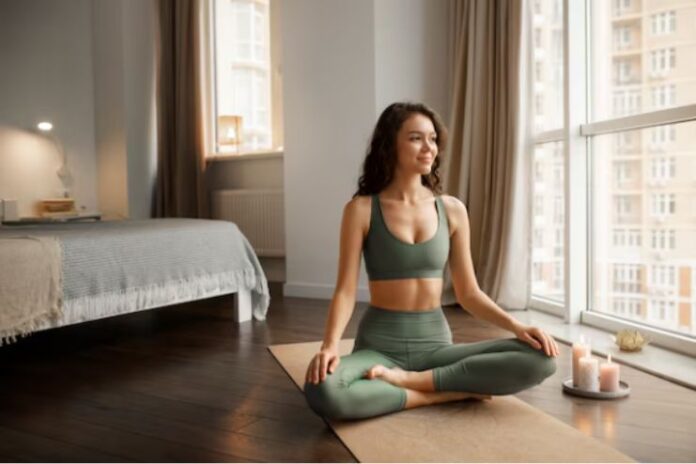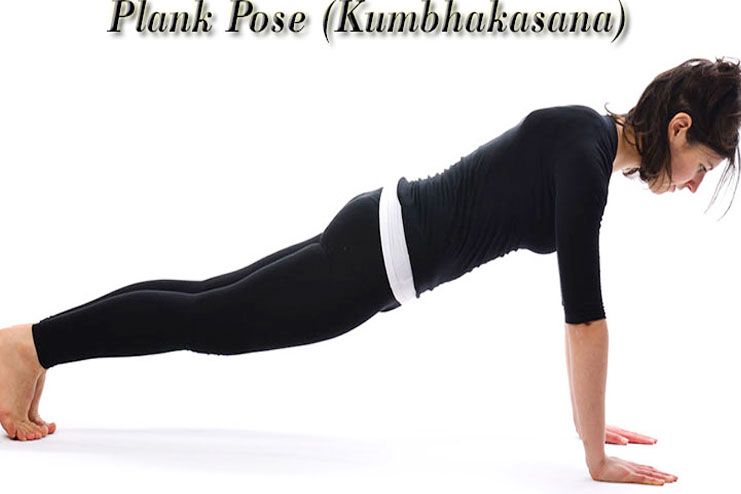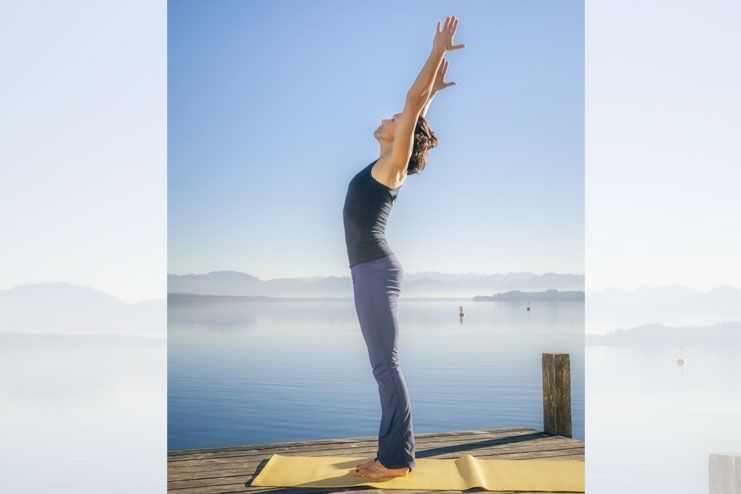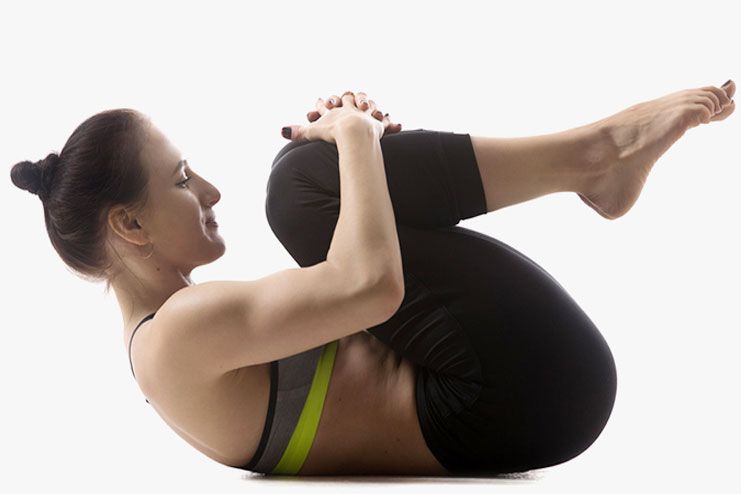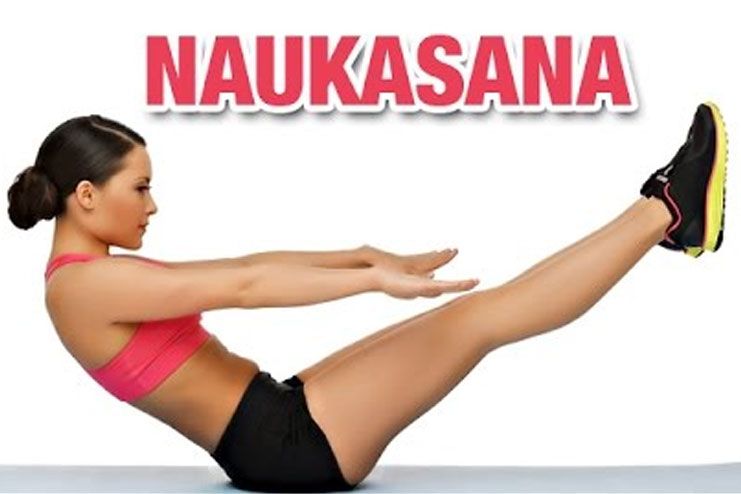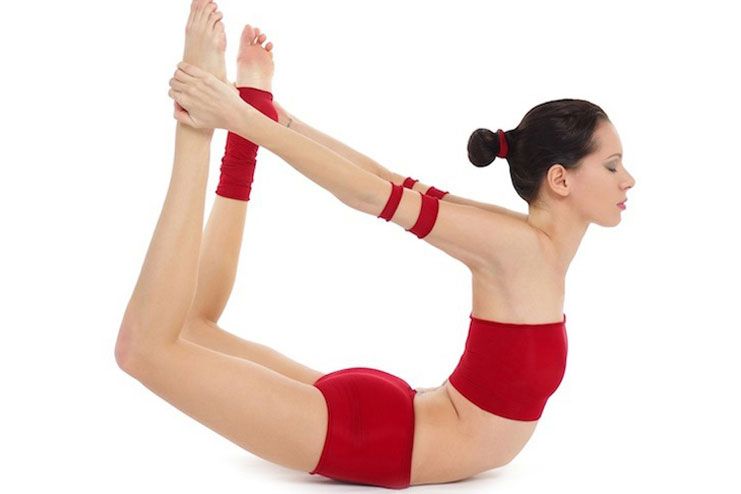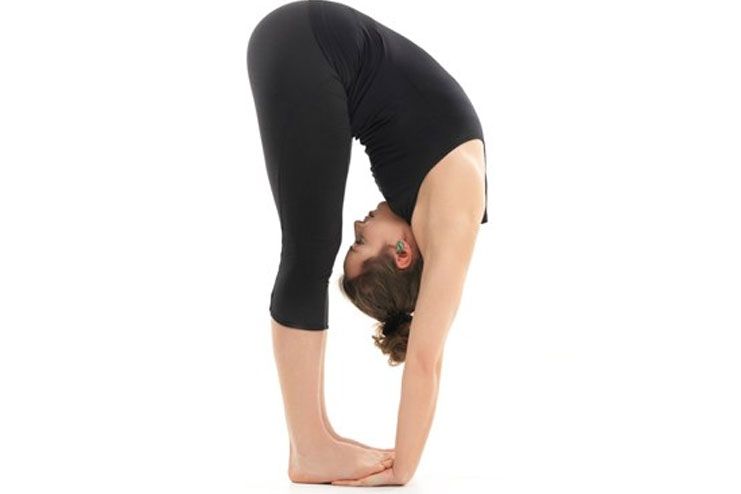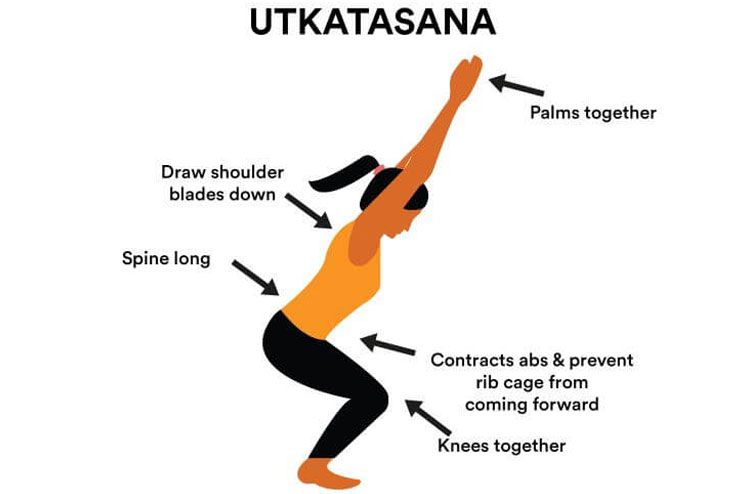Affiliate Disclaimer
Some links in this article are affiliate links. We may earn a small commission if you make a purchase through these links, at no extra cost to you. We only recommend products we find useful to our readersIs your belly fat more than just a cosmetic concern? You might think it’s just about how your clothes fit, but a sagging belly can actually be a silent threat to your health. Excess fat around the midsection isn’t just an inconvenience—it’s a serious health risk. It’s linked to conditions like heart disease, type 2 diabetes, insulin resistance, and even certain cancers.
But here’s the good news: Yoga isn’t just a relaxation technique—it could be the game-changer you’ve been looking for.
Unlike high-intensity workouts, yoga offers a holistic approach that not only strengthens and tones your body but also helps reduce stress (a major contributor to belly fat), boosts digestion, and revs up your metabolism. Ready to transform your body and your health? Let’s dive into eight powerful yoga poses that will melt away belly fat and sculpt a stronger, leaner core.
Top 8 Yoga Poses to Burn Belly Fat
If you’re looking for ways to reduce belly fat in the comfort of your home, we have eight incredible yoga poses. Read on to know more.
1. Kumbhakasana or Board Pose or Plank Pose:
Kumbhakasana is a full-body workout that strengthens the core, shoulders, and thighs, helping you tone stubborn belly fat.
How to do Kumbhakasana (Plank Pose):
- Begin on All Fours: Place your hands directly under your shoulders and knees underneath your hips in a tabletop position.
- Use Your Core: Draw your belly button towards you, engaging the abdominal muscles.
- Straighten Your Legs: Place both feet behind you, with your body maintaining a straight line from head to toe.
- Sustain the Pose: Maintain the arms straight, shoulders active, and attention focused on even breathing.
- Release Gently: Lower your knees to the mat and rest in Child’s Pose (Balasana) for recovery.
Advantages of Kumbhakasana (Plank Pose):
- Strengthens Upper Body & Core: Activates the core, back, arms, and shoulders for better strength.
- Improves Balance & Stability: Holding the position activates the core, improving the stability of the whole body.
- Increases Flexibility: Practice over time increases flexibility in the shoulders and spine.
- Activates the Manipura Chakra: Some people think kumbhakasna has helped them balance their emotions and stimulate the Manipura Chakra.
- Improves Circulation: Promotes improved circulation, endurance, and stamina.
Read More: Wednesday Wellness: Mid-Week Yoga Flow
2. Tadasana (Mountain Pose)
Tadasana or mountain pose helps correct posture and promotes blood circulation.
How to Perform Tadasana (Mountain Pose):
- Stand Tall: Stand tall with your feet either together or hip-width apart, distributing your weight evenly between both feet.
- Engage Your Muscles: Constrict the thigh muscles, move your kneecaps upward, and tighten your core.
- Lengthen Your Spine: Lightly lift the crown of the head, pulling the shoulder blades down, shoulders relaxed, and arms at your sides.
- Breathe Deeply: Breathe in, stretching the entire body up, feeling the lift throughout your body.
- Hold & Release: Hold the posture for several breaths, then release and return to a neutral standing position.
Benefits of Tadasana (Mountain Pose):
- Improves Posture: Supports correct spinal alignment and strengthens the back.
- Enhances Balance & Stability: Uses the core and leg muscles to enhance overall body control.
- Boosts Circulation & Energy: Increases blood flow and revitalizes the body.
- Strengthens Legs & Core: Activates leg muscles, abdominal muscles, and lower back for optimal support.
- Promotes Mindfulness: Focuses on deep breathing and concentration, aiding in stress relief.
3. Pavanamuktasana (Wind-Relieving Pose)
Pavanamuktasana is a simple but efficient yoga posture that releases gas, stimulates digestion, and relaxes abdominal pain by stimulating internal organs.
How to do Pavanamuktasana (Wind-Relieving Pose):
- Lie Down Comfortably: Lie down flat on your back with your legs straight and arms by your side.
- Lift Your Legs: Breathe in and lift both legs to the 90-degree position.
- Draw Knees to Chest: Breathe out and fold your knees, bringing them towards your chest.
- Hug Your Knees: Wrap your hands around your knees, pushing your thighs toward your abdomen.
- Hold & Focus: Hold the posture for several breaths, noticing the subtle pressure in your abdomen.
- Release the Pose: Breathe in as you release your hold and straighten out your legs.
- Lower & Relax: Exhale, bringing your legs down toward the floor, and relax in Savasana (Corpse Pose).
Advantages of Pavanamuktasana (Wind-Relieving Pose):
- Releases Gas & Bloating: Causes trapped gas to come out and reduces stomach ache.
- Stimulates Digestion: Facilitates better intestine movement and digestion.
- Massages Abdominal Organs: Increases blood circulation to the belly, liver, and intestines.
- Releases Tension: Relaxes tension in the lower back, hips, and stomach.
Read More: Breaking Down the Benefits: 6 Reasons Why Yoga Is Taking Over Fitness
4. Naukasana (Boat Pose)
Naukasana, or Boat Pose, is a strong yoga pose that tones the abdominal muscles, improves balance, and strengthens the core by creating a “V” shape with the body.
Benefits of Naukasana (Boat Pose):
- Strengthens Core Muscles: Activates the abdomen, lower back, and hip flexors.
- Improves Balance & Stability: It develops improved body coordination and control.
- Tones Abdominal Muscles: Targets belly fat and improves muscle definition.
- Aids Digestion: Stimulates the digestive system and promotes gut health.
- Stretches Hamstrings: Enhances flexibility in the legs and lower part of the body.
- Stimulates vital organs: Stimulates the kidneys, thyroid gland, and prostate gland.
- Reduces Stress: Promotes mindfulness and relaxation.
How to Do Naukasana (Boat Pose):
- Lie Down Comfortably: Lie flat on your back with your feet joined and hands by your sides.
- Inhale Deeply: Inhale deeply and get ready to lift.
- Lift Your Upper & Lower Body: Breathe out as you lift your chest and feet off the ground with arms extended towards your feet.
- Engage Your Core: Pull your navel toward your spine, with your abdominal muscles contracted.
- Maintain a “V” Shape: Keep your back straight and have your eyes, fingers, and toes in a straight line.
- Hold the Position: Remain in the position for 20-30 seconds, progressively longer with practice.
- Release & Relax: Exhale as you slowly return to the ground and release.
Read More: Best Yoga at Your Desk – 10 Convenient Office Yoga Poses
5. Dhanurasana (Bow Pose)
Dhanurasana, or Bow Pose, is a powerful backbend that strengthens the core, enhances flexibility, and stimulates digestion by stretching the entire body in a bow-like shape.
How to Do Dhanurasana (Bow Pose):
- Lie Down on Your Stomach: Lie flat on your stomach with your legs straight and arms by your sides.
- Bend Your Knees: Bring your heels towards your buttocks.
- Grab Your Ankles: Reach back behind you with your hands and grab your ankles.
- Lift Your Chest & Legs: Breathe in as you lift your chest and thighs off the ground, curving into a bow shape.
- Engage Your Core: Look forward and breathe deeply, keeping your balance.
- Hold the Pose: Hold for 20-30 seconds, increasing the time as you get more comfortable.
- Release & Relax: Exhale as you slowly lower your chest and legs back to the ground, then relax.
Advantages of Dhanurasana (Bow Pose):
- Strengthens Core & Back: Activates the abdomen, spine, and hip flexors.
- Improves Posture & Flexibility: Strengthens the spinal muscles and prevents slouching.
- Stimulates Digestion: Stimulates abdominal organs for improved digestion.
- Opens the Chest & Shoulders: Relieves tension in the upper body.
- Boosts Circulation: It enhances blood flow to essential organs.
- Reduces Stress & Fatigue: Promotes relaxation and emotional equilibrium.
Read More: 10 Yoga Poses For Heart Health – Get That Blood Flowing Properly!
6. Padahastasana (Standing Forward Bend)
Padahastasana, or Standing Forward Bend, is a reviving yoga asana that lengthens the spine, hamstrings, and calf muscles, increases flexibility, and builds the lower body.
How to Do Padahastasana (Standing Forward Bend):
- Begin in a Standing Position: Stand feet together or hip-width stance.
- Raise Your Arms Over Your Head: Breathe in deeply as you stretch up.
- Bend Forward from the Hips: Exhale to fold forward, keeping your spine straight.
- Reach for Your Feet: Put your hands on the ground next to your feet or legs.
- Deepen the Stretch: Hold for several breaths, with the stretch feeling through your back and legs.
- Return to Standing: Breathe in as you slowly stand up, and breathe out as you drop your arms.
Padahastasana (Standing Forward Bend) Benefits:
- Stretching of the Hamstrings, Calves & Spine: Increases flexibility and lengthens the muscle.
- Strengthening of Ankles, Legs & Core: Builds lower body strength and balance.
- Improves Blood Circulation: It enhances oxygen flow to the brain and body.
- Relieves Stress & Anxiety: Promotes relaxation and mental quietness.
- Increases Flexibility & Mobility: Assists in overall movement and posture.
- Burns Abdominal Fat: Tones the lower half of the body and activates digestion.
- Releases Neck & Back Tension: Suitable for people with a sedentary lifestyle.
Read More: What Are The Most Effective Yoga Poses For Constipation Relief
7. Utkatasana (Chair Pose)
Utkatasana, or Chair Pose, is a strong standing yoga pose that builds leg, core, and spine strength, endurance, and balance. It simulates sitting in an imaginary chair, working several muscle groups.
How to Do Utkatasana (Chair Pose):
- Begin in Standing Posture: Stand with feet hips-width apart and arms at your sides.
- Raise Your Arms Overhead: Breathe in while you raise your arms over your head, holding them parallel to each other with palms facing towards the body or clasped together in a prayer-like position.
- Bend Your Knees: Exhale and sink your hips as though you are sitting in an invisible chair.
- Engage Your Core & Keep Your Spine Straight: Make sure your knees stay aligned over your toes.
- Hold the Pose: Hold the position for 20-30 seconds, breathing consistently.
- Return to Standing: Breathe while extending your legs and lowering your arms.
Benefits of Utkatasana (Chair Pose):
- Strengthens Legs & Thighs: Works quadriceps, hamstrings, and calves.
- Tones Core & Glutes: It engages abdominal muscles and buttocks.
- Improves Posture & Stability: Strengthens spinal alignment and balance.
- Increases Endurance & Stamina: Develops lower body strength.
- Activates the Heart & Circulation: Pumps up blood flow and energy.
- Engages the Core & Back Muscles: Relieves back pain and improves posture.
- Fosters Mental Focus & Determination: It produces willpower and concentration.
Read More: Chair Yoga for Seniors: Simple Moves to Improve Strength and Flexibility
8. Paschimottanasana (Seated Forward Bend)
Paschimottanasana, or Seated Forward Bend, is an elementary yoga pose that profoundly stretches the spine, hamstrings, and lower back while inducing relaxation and flexibility. It is famous for its soothing effects on the mind and body.
How to Do Paschimottanasana (Seated Forward Bend):
- Begin in a Seated Pose: Sit with legs stretched straight out before you, feet together, and spine straight.
- Breathe In and Stretch Up: Lift your arms above your head, extending your spine.
- Exhale and Forward Bend: Hinge from the hips (not the waist) and reach for your feet.
- Hold the Pose: Reach for your ankles, shins, or toes, keeping your back as straight as possible. Use a yoga strap if necessary.
- Breathe Deeply: Hold the pose for 1 to 3 minutes, breathing steadily and feeling the stretch.
- Release and Return: Inhale while slowly bringing your torso back to the seated position.
Benefits of Paschimottanasana (Seated Forward Bend):
- Increases Flexibility: Stretches the spine, hamstrings, and lower back.
- Stimulates Digestion: Allows for better digestion and prevents bloating.
- Calms the Nervous System: Induces relaxation and eliminates anxiety.
- Improves Blood Circulation: Increases oxygenation throughout the body.
- Relieves Stress & Fatigue: Calms the mind and minimizes tension.
- Supports Spinal Health: Enhances posture and relieves lower back pain.
Conclusion: The Key to Long-term Belly Fat Loss

Yoga isn’t just about burning calories, it’s a way of life that will build your body, soothe your mind, and improve general health. The eight asanas above will help you shed that stubborn belly fat while boosting flexibility, digestion, and metabolism.
Pair these yoga exercises with a balanced diet, mindful eating, and hydration for best results. Do not forget to add breathing exercises such as Kapalbhati and Anulom Vilom for enhanced benefits.
Stay committed, be patient, and let yoga transform your body and mind. Start today, and share your progress with us, we’d love to hear from you!
-
May 2017Written by Minu Manisha
-
Apr 2025Edited by Vaishnavi















